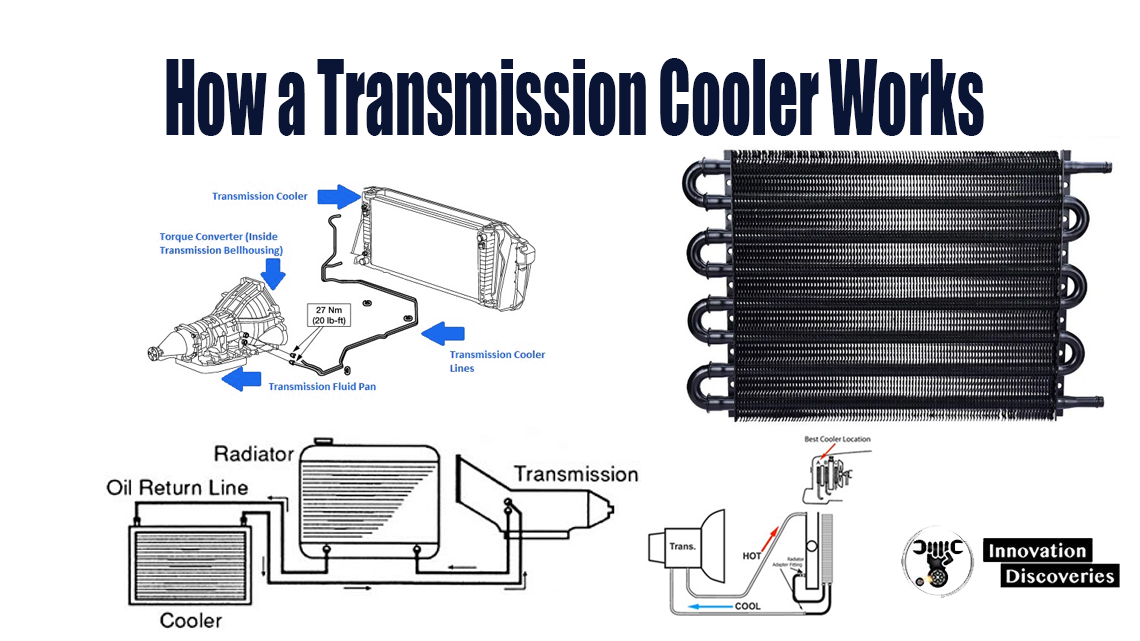
Introduction
A transmission cooler is a critical component in your vehicle’s transmission system, designed to maintain optimal operating temperatures and ensure the longevity and efficiency of your transmission.
Let’s dive into the details of how a transmission cooler works, why it’s important, and the different types available.
What is a Transmission Cooler?
A transmission cooler is essentially a small radiator that is installed in the transmission line.
It functions to cool the transmission fluid, which in turn helps to maintain the proper temperature of the transmission. This is crucial because excessive heat is one of the main causes of transmission failures.
How Does It Work?
The transmission cooler works by following a straightforward process:
- Transmission Fluid Flow: The transmission fluid circulates through the transmission system, lubricating the moving parts and carrying away the heat generated by friction and pressure.
- Heat Transfer: As the hot transmission fluid leaves the transmission, it flows through the transmission cooler. The cooler is typically positioned in front of the vehicle’s radiator to maximize airflow.
- Cooling Process: Inside the cooler, the transmission fluid passes through a series of small tubes or fins. As air flows over these tubes or fins, heat is transferred from the fluid to the air, effectively lowering the temperature of the fluid.
- Return to Transmission: Once cooled, the transmission fluid returns to the transmission, ready to absorb more heat and continue its cycle. This continuous process helps to maintain a stable temperature, preventing overheating and ensuring smooth operation.
Why is a Transmission Cooler Important?
- Prevents Overheating: Overheating is a common cause of transmission failure. By keeping the transmission fluid cool, a transmission cooler helps to prevent overheating, reducing the risk of damage and prolonging the life of the transmission.
- Improves Performance: Cooler transmission fluid means more efficient lubrication and less wear on transmission components. This translates to smoother shifts, better performance, and improved fuel efficiency.
- Extends Transmission Life: Consistent cooling of the transmission fluid helps to prevent the breakdown of fluid, which can lead to sludge and varnish buildup. This, in turn, extends the life of the transmission and reduces the need for costly repairs.
Types of Transmission Coolers
There are several types of transmission coolers available, each with its own advantages:
- Tube and Fin Coolers: These are the most common and basic type. They consist of tubes that carry the transmission fluid and fins that dissipate heat. They are affordable and effective but may not be as efficient as other types.
- Plate and Fin Coolers: These coolers are more efficient than tube and fin coolers. They use a series of plates with fins between them, providing more surface area for heat transfer. This results in better cooling performance.
- Stacked Plate Coolers: The most efficient type, stacked plate coolers, have a series of stacked plates with integrated fins. They offer the highest cooling capacity and are often used in high-performance or heavy-duty applications.
- Remote Mount Coolers: These coolers are mounted separately from the radiator and usually come with their own fan. They provide additional cooling capacity and are ideal for vehicles that experience extreme conditions or heavy towing.
Installation and Maintenance
Installation: Installing a transmission cooler is relatively straightforward, but it’s essential to follow the manufacturer’s instructions. It involves connecting the cooler to the transmission fluid lines and mounting it in a location with good airflow, typically in front of the radiator or air conditioning condenser.
Maintenance: Regular maintenance of your transmission cooler involves checking for leaks, ensuring the cooler is free of debris, and monitoring the condition of the transmission fluid. Dirty or degraded fluid can reduce the effectiveness of the cooler and lead to transmission problems.
Conclusion
A transmission cooler is a valuable addition to any vehicle, particularly those that tow heavy loads or operate in extreme conditions. By keeping the transmission fluid cool, it helps to prevent overheating, improve performance, and extend the life of the transmission.
Whether you choose a tube and fin, plate and fin, stacked plate, or remote mount cooler, the benefits of maintaining an optimal transmission temperature are clear. Regular maintenance and proper installation are key to ensuring your transmission cooler operates efficiently and effectively.
Summary
Investing in a transmission cooler is a proactive step towards maintaining the health of your vehicle’s transmission.
Understanding how it works, why it’s important, and the types available will help you make an informed decision to keep your vehicle running smoothly and reliably for years to come.
Discover More:
RAED MORE: 5 CAUSES OF TRANSMISSION FLUID LEAKS AND REPAIR COST

- 3 COMMON SYMPTOMS OF LOW POWER STEERING FLUID
- YOUR CAR IS LOSING COOLANT BUT NO LEAK: WHAT SHOULD YOU DO?

FOR MORE KNOWLEDGE
- 4 COMMON SYMPTOMS OF AUTOMATIC TRANSMISSION PROBLEMS
- COMMON PARTS OF AN AUTOMATIC TRANSMISSION
- COMMON FAULTS IN THE 6-SPEED DSG TRANSMISSION
- IS REBUILDING A TRANSMISSION WORTH IT IN THE LONG RUN?
Visit Forum
Visit Our Friendly Website








